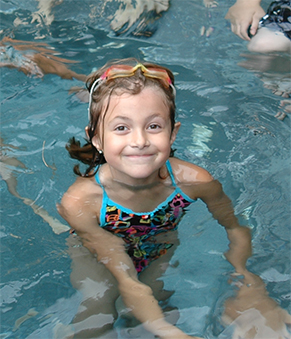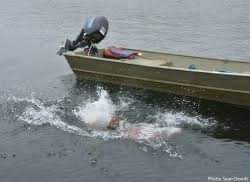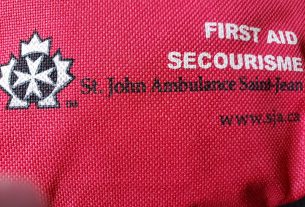**** Lifesaving Society Release
Water Safety
Basic water safety skills are essential. Swimming pools, lakes and rivers offer year-round fun if they are enjoyed safely. But every year about 160 people drown in Ontario. Drowning is the second leading cause of accidental death for children under five years old, and statistics show that children under 12, boaters, young men and seniors 65+ are at greatest risk.
Drowning is fast and silent, but every drowning death is preventable with water safety knowledge and common sense.
Important water safety tips for everyone:
- Learn to swim
- Always swim with a buddy
- Children and non-swimmers should always be supervised around water
- Wear a lifejacket whenever you are in a boat
- Alcohol and water don’t mix: don’t drink and swim, don’t drink and drive your boat
Read more about:

WATER SMART® CAMPAIGN
The Lifesaving Society’s ongoing public education campaign aims to make Canadians “Water Smart.” The campaign target groups, messages, and priorities are based on the Society’s analysis of its annual drowning and other relevant research. The Water Smart Campaign encourages individuals in high-risk target groups to exercise safe and responsible behaviour in and around water to prevent water-related injuries. Our Water Smart drowning prevention campaign is funded through donations, community fundraising events and sponsorships. If you would like to donate to the Lifesaving Society, or discuss ways in which you can contribute, please email our fundraising department or call 416-490-8844 for more information.
Drowning in Canada
In Canada, drowning is the No. 1 cause of unintentional injury deaths among children 1-4 years of age, and the second leading cause of preventable death for children under 10 years. With some 500 fatalities annually, drowning is the third leading cause of unintentional death among Canadians under 60 years of age (surpassed only by motor vehicle collisions and poisoning).
LEARN TO SWIM
Basic swimming ability is a fundamental requirement in any meaningful attempt to eliminate drowning in Canada. The Lifesaving Society offers training programs from learn-to-swim through advanced lifesaving, lifeguarding and leadership.
Our Swim for Life program stresses lots of in-water practice to develop solid swimming strokes and skills. We incorporate valuable Water Smart® education that will last a lifetime.
Swim to Survive is a Lifesaving Society survival training program. Swim to Survive is not a subsititute for swimming lessons; instead, it defines the minimum skills needed to survive an unexpected fall into deep water. People of all ages should be able to perform the Society’s Swim to Survive standard.




